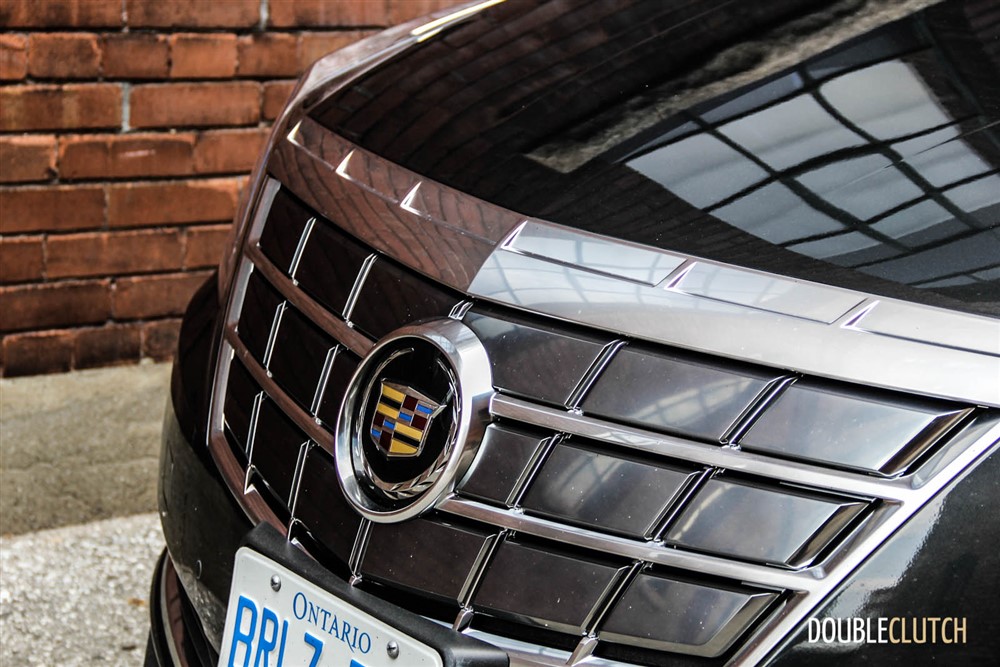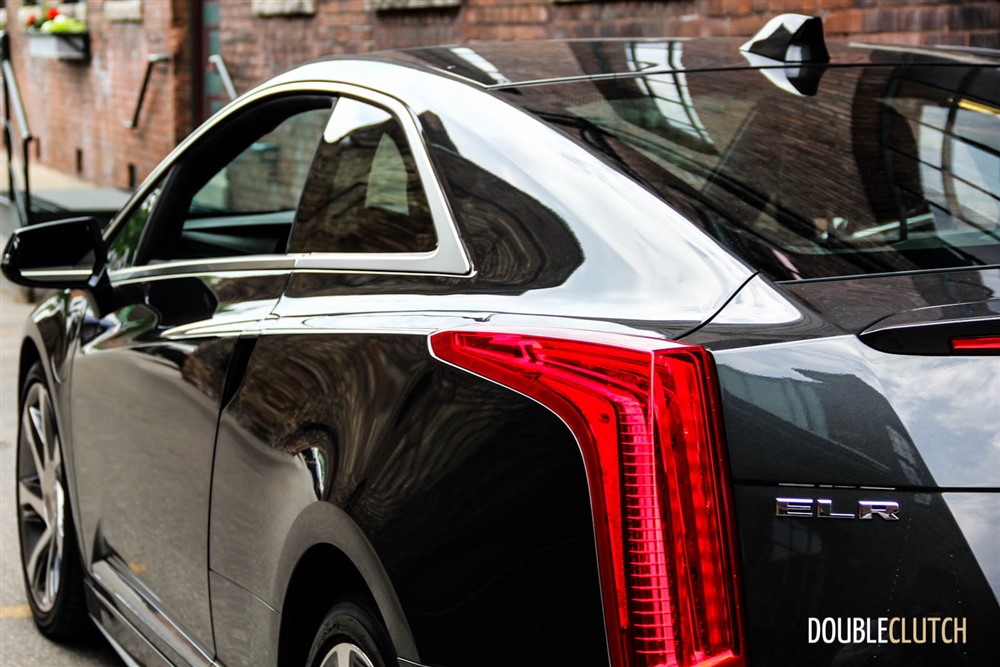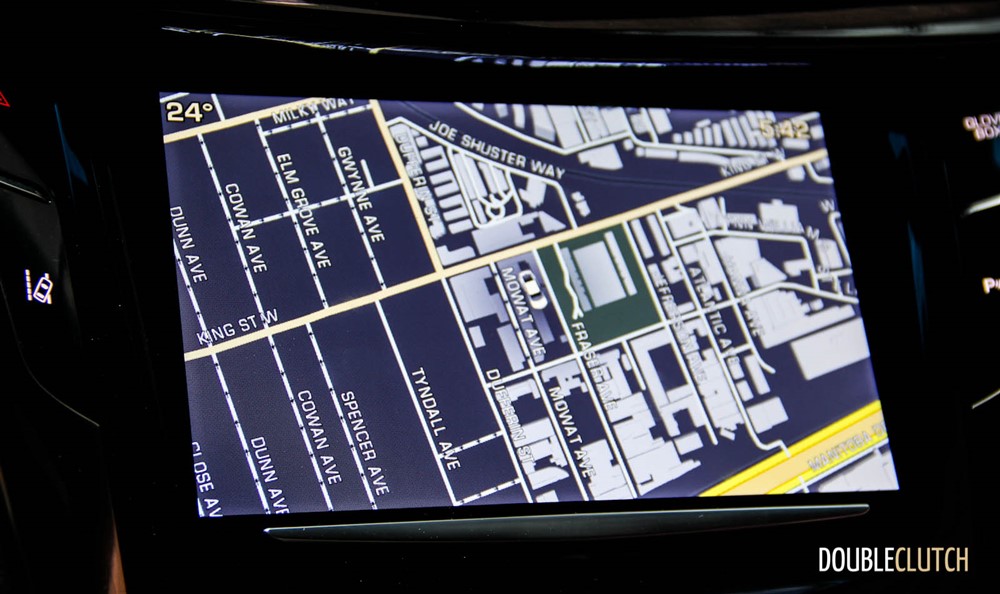Electric vehicles are inevitably becoming more and more popular on our roads. With the cost of premium fuel having just surpassed $1.50/litre ($5.60/gallon!), their appeal just went up exponentially. We’ve spent some time with plug-in hybrids such as the Honda Accord PHEV as well as full EVs like the Tesla Model S and the Nissan Leaf. For logistical reasons, I hadn’t personally taken an electric vehicle home for a week before (save for the Tesla Model S in a colossal ice storm), so the 2014 Cadillac ELR marked many firsts.
The styling of the ELR is unmistakably Cadillac. Quite possibly the best execution yet of the Art & Science design language, its lines debuted in 2009 as the Converj Concept car. This concept was so well received that the guys over at General Motors decided to add some wing mirrors, make a couple of minor styling tweaks here and there, and sell the thing as is. ELR is a low-slung four-seat two-door coupé, and looks like what the next-generation CTS Coupé could be. Futuristic, right? I mean, typically you just pull a handle to open the door. Not on the ELR – in order to exit the vehicle, you push a button that electronically opens the door. From the outside, there’s a touchpad inside the “handle” that unlatches the door. Simply put, the car is stunning – I got compliments, looks, and questions literally everywhere I went.
So the Cadillac ELR is an EV, right? Well, pretty much. It houses a 16.5 kilowatt battery, the same size as the one in the ELR’s sister car, the Chevrolet Volt. However, the electric motor that actually powers the wheels is quite a bit more powerful in the Cadillac. It brings power ratings to 207 horsepower and 295 lb-ft of torque. The interesting thing is that despite these numbers, the ELR does not feel sluggish or slow in the slightest. That old rumour about electric cars being absurdly anemic is quickly being put to rest – this thing is all torque, all the time.
The reason I hadn’t previously taken an EV home is because the parking garage of my downtown Toronto condominium lacks power outlets. There’s one near visitor parking, but the one time an acquaintance tried to plug their car in, they returned to a hand-scribbled note on the windshield to stop stealing electricity. In order to make the most of my time with the ELR, I spent some time at my parents’ place in the suburbs. Plugging into a standard 110V outlet, charging time is about 13 hours. This is a bit on the long side, but I left the car overnight and had no complaints. Charging at a 240V station takes just under 5 hours, and I was able to use the PlugShare app on my iPhone to find local charging stations near where I had to be.
On a full charge, I observed a full EV range of 70km, a bit more than the EPA’s rating of 59km. After this range runs out, the gasoline-powered on-board generator keeps you going for an additional ~380km. I started with a full tank and observed approximately 4.5L/100km. It’s important to note that both the Volt and the ELR’s generators request premium fuel. Okay, so some may argue that because there is an on-board fuel tank, this can’t really be counted as a full EV. I’d argue that it is though, because all the fuel tank does is power the generator allowing you to take an extended road trip with it, something that’s essentially impossible with traditional electric vehicles.
Moving past its superbly futuristic styling, the ELR is all Cadillac on the inside. Entering the cockpit, you are immediately surrounded by the familiar woods, leathers, and displays that proudly represent the ultimate in American luxury. The CUE infotainment system is the exact same in other models, and the seats are just as supple and supportive as they are in the ATS. The driving position is bang-on, and there’s no fussiness about common adjustments with regards to the seats, the steering wheel, or the mirrors. Right in front of your eyes though, the instrument cluster is unique to the ELR. It’s not unlike the one in the Volt, detailing energy usage, fuel consumption, and even lets you browse playlists and select audio. The only bit of the interior I wasn’t a huge fan of is the HomeLink pad – the series of three buttons marked “1, 2, 3” that are meant to open your garage doors when programmed. Unlike anything else in this Cadillac coupe’s interior, these buttons felt a bit cheap.
There are some things to like and some things not to like about CUE interface. It has haptic feedback for the touch-sensitive “buttons”, and it uses some familiar gestures from my iPhone (pinch for zoom on the map display). I’ve tested a variety of vehicles that have this system on board, and I just haven’t gotten the hang of it yet. Plus, I am very loyal to my 160GB iPod Classic, and it doesn’t mingle well with CUE – skipping songs randomly and freezing whenever it wants to. I will say though that the Bose sound system is tuned perfectly for the ELR; every note is perfectly clear and there is the right balance of bass, midrange, and treble for various genres of music.
What the biggest puzzle seems to be with the Cadillac ELR is the price. My tester came in with a few options at $86,000. That’s more than double what the ~$40,000 Chevrolet Volt costs. However, I don’t see much of an issue with this badge engineering/platform sharing, and it isn’t even unique to GM. Nobody seems to argue when the Lexus ES350 is thousands more than the Toyota Avalon, or the Lincoln Navigator’s price versus the (now-defunct) Ford Expedition. Frankly, the ELR isn’t just a Volt with some fancy badging and a few toys. It’s a rolling fashion statement – it looks like a concept car that just rolled off the podium at an auto show. On top of its stunning looks, it’s a pleasure to drive while being eco-friendly, and that’s exactly what the next generation of automotive buyers is looking for.
2014 Cadillac ELR Gallery




















